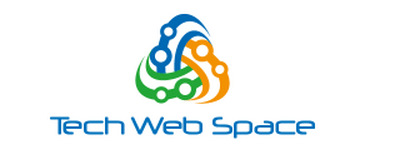
Every minute, countless viewers watch live content on YouTube Live, TikTok Live, Meta Live, and other similar platforms. This creates a continuous stream of real-time interactions, comments, and behavior data. These footprints are richer than static social media posts and usual online activity. But many businesses focus only on traditional analytics. Thus, they miss out on something significant: the wealth of unfiltered consumer insights that flows through live streams.
This fleeting data reveals real reactions and genuine brand mentions. Looking at this the other way around, this offers insights that scripted content just can’t provide. The trick is to capture and study this fast-moving information before it vanishes into thin air.
Web scraping services are just apt to unlock this powerful data source. These services empower companies to use live stream intelligence to gain an edge over competitors, research markets in-depth, and make smart choices.
What Is Live Stream Data?
To make good use of live stream intelligence, business leaders need to understand the rich data ecosystem within every broadcast. That said, live streams have different layers of data flowing at the same time. Each layer provides unique insights into audience behavior and content performance. The three core categories include:
- Metadata serves as the base layer containing key information, such as stream titles, descriptions, streamer names, viewer counts, categories, and timestamp. This data helps companies identify patterns in how audiences engage.
- Audience Interaction makes up the liveliest part. It includes recording live chat messages with usernames and timestamps, emoji usage, “super chats” or paid highlights showing viewer interest, and instant reactions to specific events. This information reveals honest customer feelings and provides instant feedback.
- Content Analysis uses the latest extraction techniques, including turning speech into text from audio and checking on-screen images, logos, or product placements. This high-level approach provides context on how audiences react and allows thorough content tracking across visual and audio components.
Together, these data layers provide an overview of how audiences connect with live content. And this sets the base for the next important question: why should businesses scrape live stream data? Let’s find this out in the next section.
Why Should Businesses Scrape Live Stream Data?
Although audience tracking is very helpful, it often fails to provide an authentic overview of how customers respond to offerings. But live stream data aptly provides this intelligence. Brands can access raw, unfiltered consumer behavior and track spontaneous discussions around industry shifts. Not only this, but brands can uncover and cater to the unmet needs of their audience through real conversations.
In addition to customer insights and market research, brands can achieve even more by scraping and collecting live-stream data. Let’s take a closer look:
Brand and Campaign Monitoring
Brand mentions in live streams provide instant feedback on marketing efforts. They can monitor how people perceive the brand as soon as the campaign or product launch goes live. Take the case of a sportswear brand going live to launch a new pair of sneakers. Through live stream data capture, they can measure whether excitement builds organically or if negative feedback emerges.
Competitive Intelligence
Live streams reveal what competitors are up to, products they’re launching, and their market position. Taking advantage of this, brands can monitor how audiences interact with other brands. They can also keep an eye on sponsored content and identify gaps in their offerings by listening to what viewers are saying. In short, businesses can get a clear picture of how the market is responding at the moment.
Influencer and Partnership Vetting
Before teaming up with influencers, brands can assess their live stream data to understand who their audience is and check if the engagement is real. Through this, stakeholders can also determine if the influencers’ content aligns with the brand’s values. For example, a skincare company can examine whether viewers genuinely interact with an influencer’s live demo of their products or simply scroll past sponsored mentions.
Content Strategy and Ideation
Live stream data provides a glimpse into trending topics, successful content types, and audience preferences. Companies can identify content gaps, determine what works for their audience, and build roadmaps based on consumer behavior, not just guesses. Gaming studios, for example, can use audience interactions during live streaming of beta testing to set development priorities.
As is evident, live stream data is a treasure trove of information, but capturing and handling it at scale is tough, requiring special know-how. This is where professionals come to the rescue, helping brands unlock stream intelligence. And this brings us to the next section: the role of web data scraping service providers in capturing this fleeting data.
How Can Professional Data Scraping Services Companies Solve These Problems?
To get value from live stream data, businesses need a proper technology setup and expertise. That’s because tapping into this fleeting information is not as simple as recording chat logs. Here’s how dedicated web scraping companies help:
- Real-Time Data Pipelines: Top-notch data scraping companies set up advanced systems that capture live stream data as it occurs. This ensures businesses don’t miss key moments or hot topics. Further, they can act fast on market opportunities as well as risks.
- Handling Scale with Cloud Infrastructure: Live stream data is generated in huge amounts across many platforms at once. Expert website scraping service companies utilize cloud technology to handle such volume, ensuring that peaks are captured and analyzed without disruptions. Thus, businesses can easily extract nuggets of insight from viral events.
- Bypassing Anti-Scraping Hurdles: Streaming platforms have advanced anti-scraping protections, such as request rate limits and blocked IP addresses. An experienced web scraping service provider uses networks of rotating proxies, tools to automate browsers, and scraping methods. This helps them access data while following platform rules and staying under the radar.
- Data Structuring and Enrichment: Live stream data in its raw form doesn’t provide any useful business insights. Professional services organize unstructured chat data, link timestamps with events in the content, check the sentiments of text interactions, and add more details to datasets. These add-ons also include information about locations or patterns in how users behave.
- Reliability and Maintenance: Live streaming platforms often change their interfaces, APIs, and security measures. This means scraping methods need to adapt. Professional online web scraping services have teams that monitor platform changes. These teams update extraction methods and ensure data keeps flowing without disrupting business operations.
But technical skills aren’t enough. To get data from live streams, businesses have to handle tricky legal and ethical issues. What’s worse is that these issues are different for each platform and location. Let’s explore this in detail in the next section.
What Are the Legal and Ethical Issues Around Scraping Live Stream Data?
Before collecting live stream data, companies must have a strong base of legal compliance and ethical practices. The rules about data extraction are constantly evolving, so it’s crucial to get expert advice.
Terms of Service Compliance
Each streaming platform has its own rules about data access and use. Companies need to read these rules before they start scraping data. They must ensure they follow the platform’s data collection rules. Web scraping providers should have a thorough understanding of legal rules and know how to access data without breaking them.
Copyright and Privacy Considerations
Live streams often have copyrighted content and personal data. Companies should filter out copyrighted content, anonymize personal information when needed, and respect the rights of people who own intellectual property. This implies that businesses shouldn’t collect private user information and should use data in ways that comply with privacy laws like GDPR or CCPA.
Rate Limiting and Platform Respect
Responsible scraping practices include setting proper rate limits to prevent overloading platform servers and following robots.txt files when needed. Professional services strike a balance between collecting data and maintaining platform stability. They ensure their work doesn’t impact the streaming experience of users while still getting consistent access to data.
Final Words
Live stream data is a goldmine of genuine, real-time consumer insights that businesses just can’t ignore. Professional web scraping services in the USA and around the world have the tech know-how and tools to turn this fleeting data into useful business insights. This allows companies to make smart choices based on how customers react in real-time, not on outdated static analysis.

